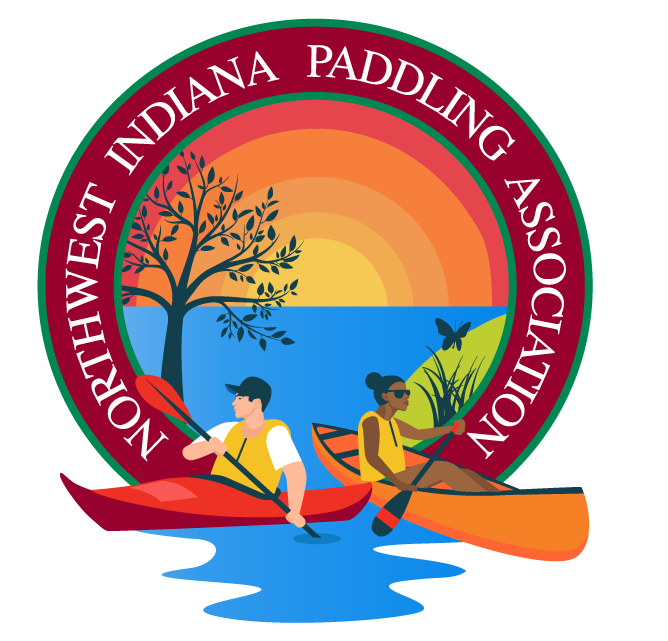
Be Prepared, Stay Vigilant
Guidelines to Keep You Safe
Emergency Information
IN AN EMERGENCY, CALL 911.
Know your location before calling.
The international distress signal (SOS) is a set of three short blasts followed by three short blasts on a whistle or horn or setting off three aerial flares.
Waving a paddle at a passing boat also works.
Emergency gear to consider bringing with you:
- A whistle fastened to your life jacket
- Compressed air horns
- A signal mirror
- Aerial flares
- A flashing strobe light on your life jacket
For more information visit: uscgboating.org/recreational-boaters
Kankakee River National Water Trail
The Kankakee River National Water Trail provides 85 miles of paddling in Indiana on a historic, undammed river flowing through several state and county parks.
What to Expect
Sightings of diverse wildlife and wetland plant habitat including beaver, deer, waterfowl and a wide variety of fish. The river banks are filled with native hibiscus flowers in August.
Steep grades at access points.
Few support facilities or restrooms; little access to fresh water.
Potential logjams at highway and railroad bridges.
What To Do
Learn more at kankakeeriverwatertrail.org, and obtain a good local road map.
Drive along your route to visually check for logjams.
Plan ahead with a friend for an emergency shuttle.
What Not To Do
Do not attempt to paddle through obstructed waterways.
Never paddle the river at, or near, flood stage.
Alcohol and glass bottles are discouraged.
Lake Michigan Water Trail
Paddlers can enjoy more than 50 miles of water with multiple access points from the Indiana/Illinois border to the Indiana/Michigan border.
What to Expect
Great views of the Chicago skyline, the Indiana Dunes and a unique intersection of industry and nature.
Waves, which can provide fun conditions for experienced paddlers, but which can be hazardous to novices in recreational kayaks.
What to Do
Know and respect your expertise level.
Use a vessel appropriate for open water paddling, such as a sea kayak, especially when paddling farther than swimming distance from shore.
Check the local forecast on National Weather Service radio or by visiting weather.gov
Check for recent E. coli bacteria levels: extranet.idem.in.gov/beachguard
Seek training in both self- and group-rescue skills.
If dangerous weather or visibility conditions arise, paddle to closest shore and call the U.S. Coast Guard at 800-323-7233 if necessary.
What Not to Do
Don’t paddle close to the steel plants
Don’t launch or land on private property at any time.
Avoid swimmers and populated swimming beaches.
General Paddling Safety
Be Visible
Buy a brightly-colored boat.
Wear bright clothing.
If paddling during dusk, dawn or at night, your boat must have lights.
Put reflective tape on your paddle and your personal flotation device.
Stay alert and out of the way when you hear motors.
Check in.gov/dnr/fishwild for hunting seasons before your trip.
What to Wear
Your personal flotation device, also known as a life jacket, has to fit you properly, and it must be zippered while paddling. Wearing a properly-fitted life jacket can save your life. It is the single most important safety precaution a paddler can take.
Wear synthetic clothing that can help keep you warm when wet. Do not wear cotton.
Wear a wetsuit, a synthetic top and a jacket for water temperatures between 65 and 55 degrees.
Wear a drysuit for water temperatures lower than 55 degrees.
Wear polarized sunglasses and sunscreen.
If the weather dictates, wear rain gear.
What to Bring
Keep spare clothing in a sealed bag.
Bring adequate food and water. Water is not available at most access sites.
Carry a GPS unit and waterproof communication device.
Have a spare paddle and be sure to use a tether.
A bilge pump is essential for any paddlers going far from shore. It can bail you and your boat out of a bad situation.
A tow line to tow another boat during group outings should someone become incapacitated.
What To Do
Leave a trip plan with friends and family. Be prepared for changing weather conditions.
Know your abilities and physical limitations.
Practice falling out of your boat in shallow water to experience what it would be like before you start your trip.
Know your location as accurately as possible.
What Not to Do
Do not get close to moving vessels.
Do not overload your boat.
Do not litter. Be a paddling steward and clean up litter.
Do not go on privately-owned shorelines unless in an emergency.
Safety Resources
Cold Water Safety
Read why paddling in cold weather, or simply cold water, is do dangerous, and how to protect yourself. Click here…








